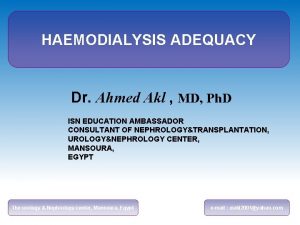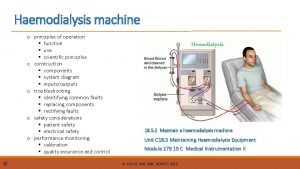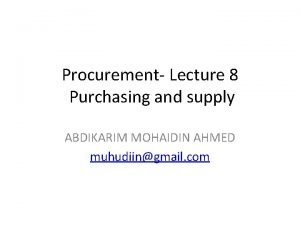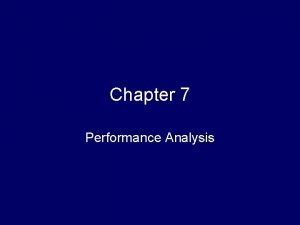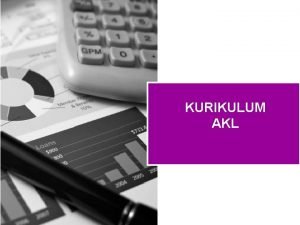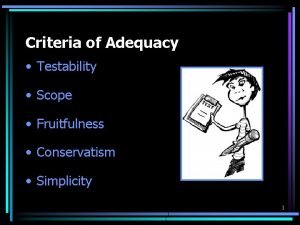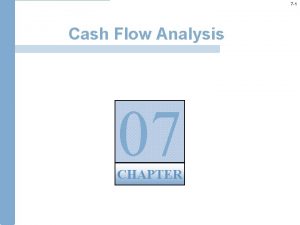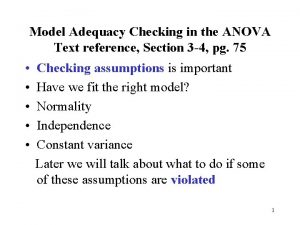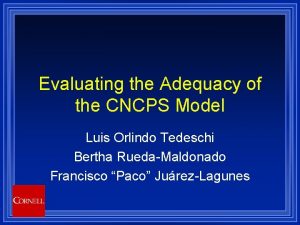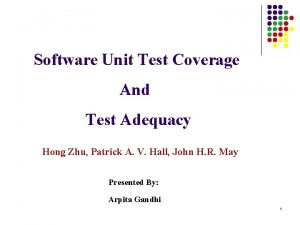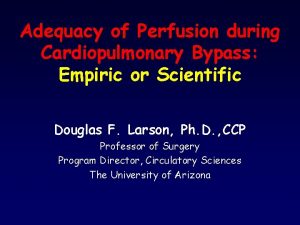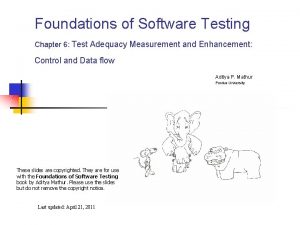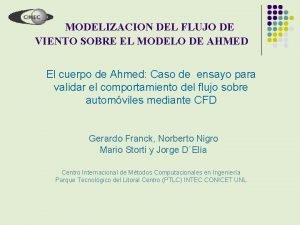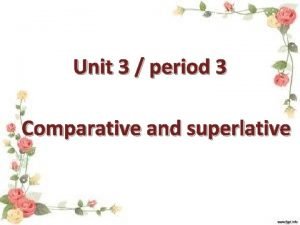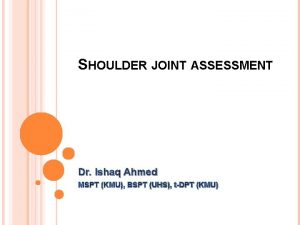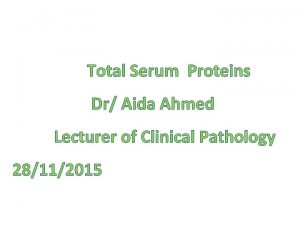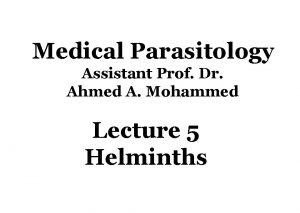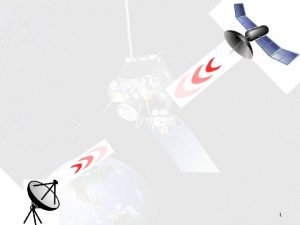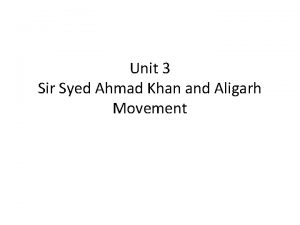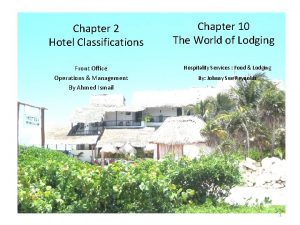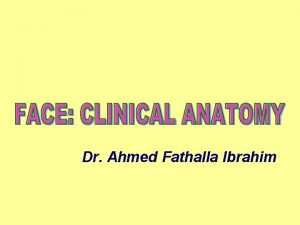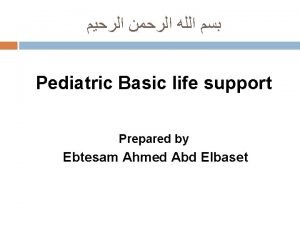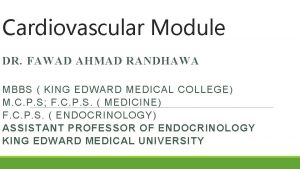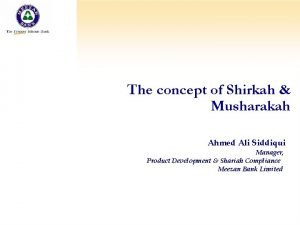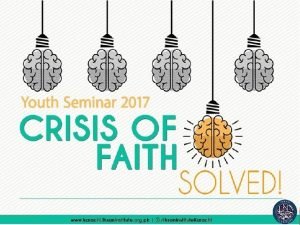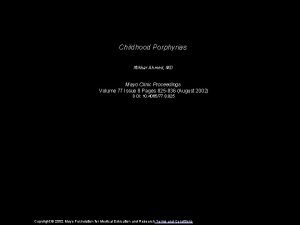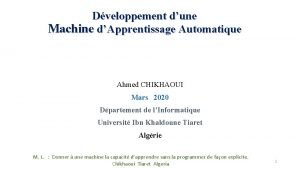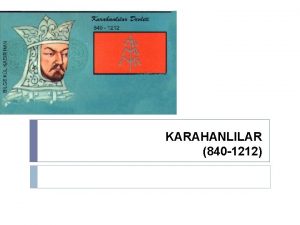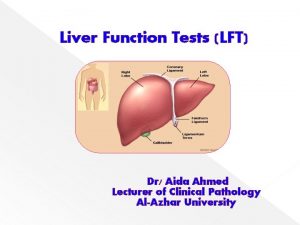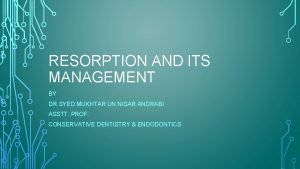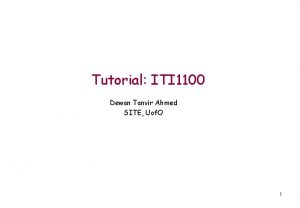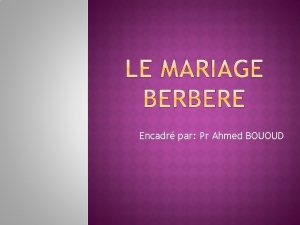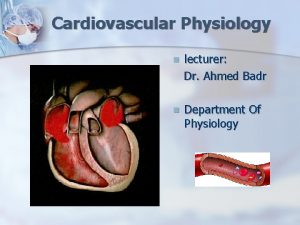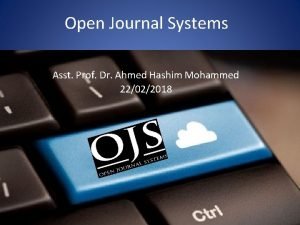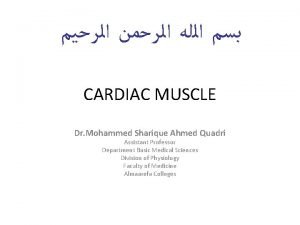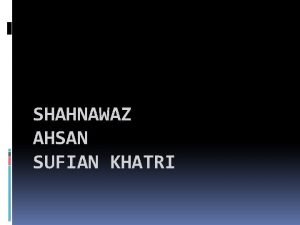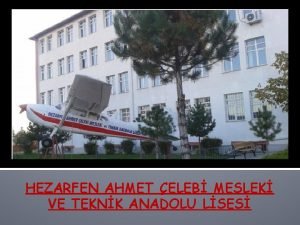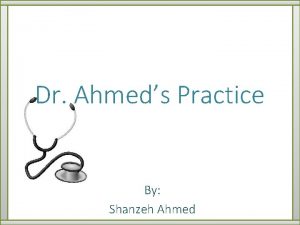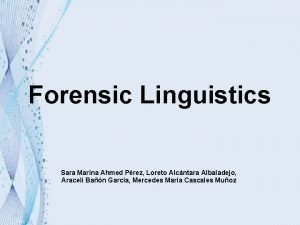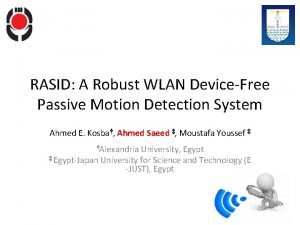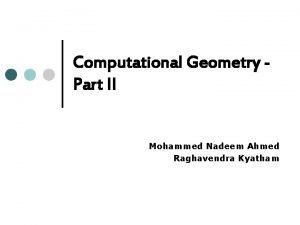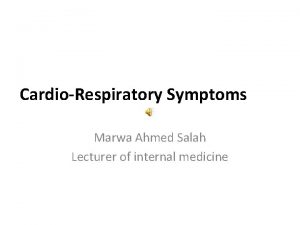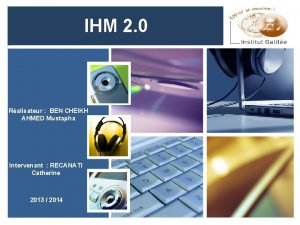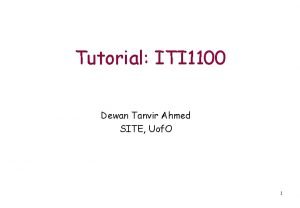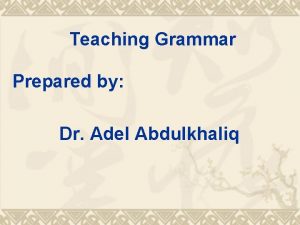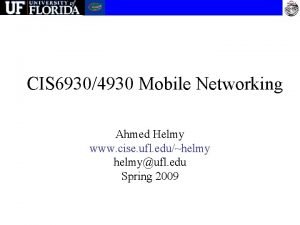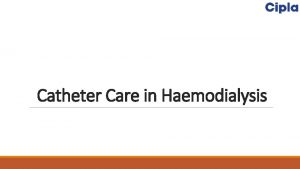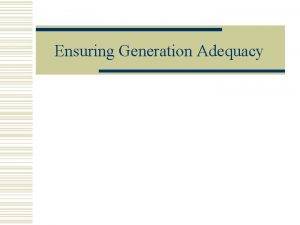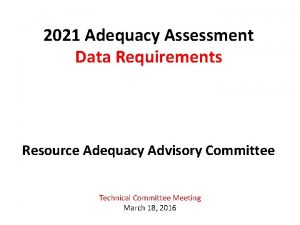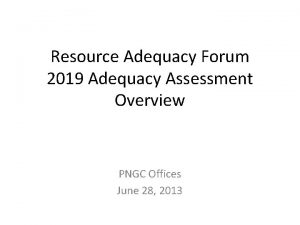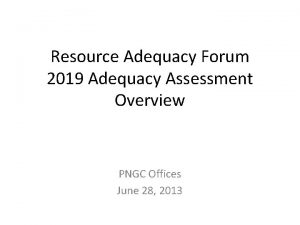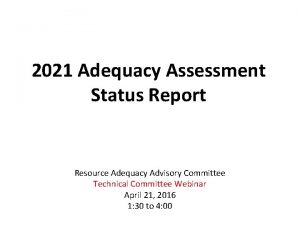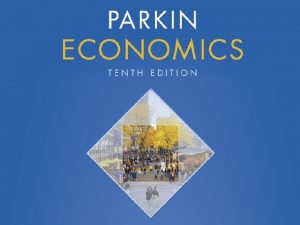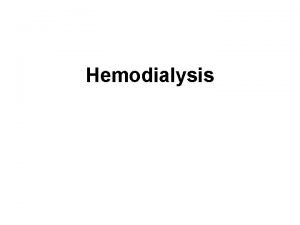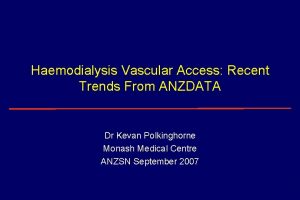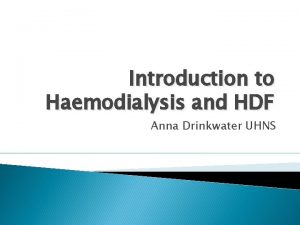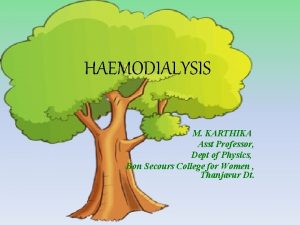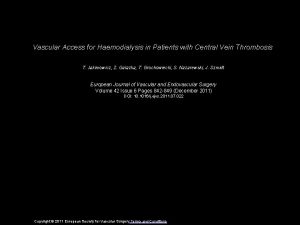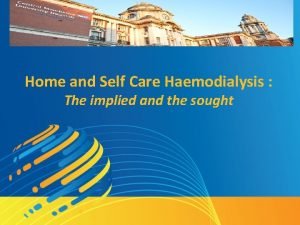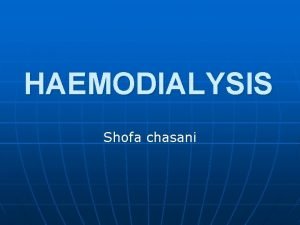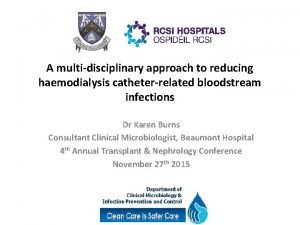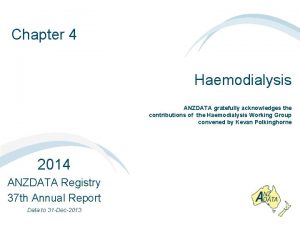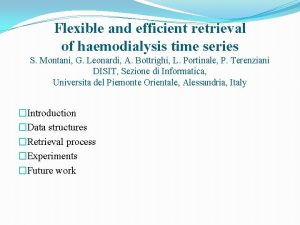HAEMODIALYSIS ADEQUACY Dr Ahmed Akl MD Ph D









































































- Slides: 73

HAEMODIALYSIS ADEQUACY Dr. Ahmed Akl , MD, Ph. D ISN EDUCATION AMBASSADOR CONSULTANT OF NEPHROLOGY&TRANSPLANTATION, UROLOGY&NEPHROLOGY CENTER, MANSOURA, EGYPT The urology & Nephrology center, Mansoura, Egypt e-mail : aiakl 2001@yahoo. com

OPTIMAL DIALYSIS Anemia management BP control Good nutrition Dialysis adequacy Fluid and electrolytes hemostasis Kt/v BMD management

In 1913 three medical scientists working in the Department of Pharmacology at Johns Hopkins Medical School devised equipment and methods for vividiffusion in animals; haemodialysis was invented. However, thirty years elapsed before a clinically effective system was designed, by Willem Kolff working in the Municipal Hospital at Kampen. The urology & Nephrology center, Mansoura, Egypt e-mail : aiakl 2001@yahoo. com

THE FIRST ARTIFICIAL KIDNEY Four artificial kidneys built in 1943 and sent to the UK, the USA, Canada and Poland The urology & Nephrology center, Mansoura, Egypt e-mail : aiakl 2001@yahoo. com

Gordon Murray (1963) The urology & Nephrology center, Mansoura, Egypt Murray’s first dialyser e-mail : aiakl 2001@yahoo. com

The Murray-Roschlau ‘second-generation’ Flat-Plate Dialyser. • This was an advanced flat-plate parallelflow dialyser with: • 30 layers of dialysis units. • Each unit with two membranes and two dialysis compartments. • Forming a dialyser of 0. 6 m 2 surface area and with a priming volume of only 225 ml. The urology & Nephrology center, Mansoura, Egypt (National archive of Canada, MG 30 B 110 D. W. G. Murray Papers, Volume 41, File 16, Negative No. C 143613; Supplied by Dr. W. Roschlau). e-mail : aiakl 2001@yahoo. com

Urea (or BUN) levels Urea is the substance most often monitored in clinical practice because: • It is a small, readily dialyzed solute that is the bulk catabolite of dietary protein. • Constitutes 90% of waste nitrogen accumulated in body water. • Is easily measured in blood. • Fractional clearance of urea in body water correlates with patient outcomes. • BUN stands for Blood Urea Nitrogen. With normal kidney function, a person has a BUN in the range of 8 - 25 mg/dl. The urology & Nephrology center, Mansoura, Egypt e-mail : aiakl 2001@yahoo. com

Shooting for BUN Targets • In the 1970 s and early 1980 s, a common practice was to prescribe hemodialysis therapy in order to attain a target BUN. • The pre-treatment BUN never to exceed 80 mg/dl. To achieve that goal, they adjusted: • The amount of time on dialysis. • The blood flow rates. • Changed dialyzers. • Issued restrictions on dietary protein. Sad, but true - 1970's Renal Dietary Counseling: Stop eating so much protein OR WE'LL HAVE TO INCREASE YOUR DIALYSIS TIME !! Using target BUNs Seemed like a logical approach to prescribing hemodialysis. The urology & Nephrology center, Mansoura, Egypt e-mail : aiakl 2001@yahoo. com

Questions No One Could Answer However, many patients who hitting these BUN targets were still not doing well, and some displayed symptoms of being underdialyzed. Why was this? Why did patients who weighed the same and ate the same amount of protein require different amounts of dialysis therapy to stay healthy? Why were some patients who had pre-treatment BUNs of 100 perfectly healthy, yet others who had pre-treatment BUNs of 60 unhealthy and in need of more dialysis? The urology & Nephrology center, Mansoura, Egypt e-mail : aiakl 2001@yahoo. com

Using Urea Clearances • They found the data didn't make much sense until they invented a new way of measuring dialysis therapy. • Their new method still utilized urea, but it didn't use a target BUN. Instead, it measured the volume of blood that was cleared of urea during a treatment and compared it to the amount of water in the patient's body. • The end result was that Gotch and Sargent arrived at a simple, elegant formula for measuring dialysis therapy: t K V The urology & Nephrology center, Mansoura, Egypt e-mail : aiakl 2001@yahoo. com

National Cooperative Dialysis Study (NCDS) • In the 1970's, the NCDS was funded to try to determine which dialysis therapies provided the best patient outcomes. • A huge database of information about dialysis patients for the first time. • Analyzed the study's database trying to find new common factors for those patients that were doing well (and for those patients that were doing poorly). Dr. John Sargent Prof. Frank Gotch

Urea Kinetic Modeling • Why were some patients who had urea levels of 100 perfectly healthy, yet others who had levels of 60 unhealthy and in need of more dialysis? • Why did two patients who weighed the same amount need different lengths of dialysis treatments to stay healthy? • The formula Kt/V effectively answered these questions for the first time. • When Gotch and Sargent applied the Kt/V formula to the data they had for these patients, the healthy and unhealthy patients fell into two distinct numerical groupings. The urology & Nephrology center, Mansoura, Egypt e-mail : aiakl 2001@yahoo. com

Urea Kinetic Modeling • If the patient had a Kt/V value that was 1. 0 or higher, they were doing well in terms of being adequately dialyzed. • If they had a Kt/V value less than 0. 8, they were underdialyzed and were doing poorly. • This new approach became known as UREA KINETIC MODELING. • It uses the results of two blood tests, pre and post treatment BUNs, in its calculations. • Urea kinetic modeling includes protein metabolism analyses and It calculates the protein catabolic rate (PCR). The urology & Nephrology center, Mansoura, Egypt e-mail : aiakl 2001@yahoo. com

Urea Kinetic Modeling Another benefit of Gotch and Sargent's analyses was that it provided strong scientific evidence that dialysis patients were better off eating more protein, not less. As more data accumulated, it became apparent that reducing protein in the diet to keep the urea levels low was actually resulting in patients not getting enough protein to stay healthy (low albumin levels). Over the years, it also became apparent that there were additional longterm benefits for the patients in increasing their Kt/V values to 1. 2 and higher. At the 1970's patients who ate more than their allowed amount of protein were "punished" with more dialysis time. That were actually in sync with today's best clinical practices. The urology & Nephrology center, Mansoura, Egypt e-mail : aiakl 2001@yahoo. com

Around 1990, researchers were able to show a high degree of correlation between Kt/V values and urea reduction ratios (URR). A URR can be calculated with simple algebra and only uses the same two blood tests as the Kt/V equations. While a URR is not as accurate as a Kt/V value, nor does it provide any information about the patient's protein intake, a URR value does provide an easy-to-calculate marker for dialysis adequacy. As an example, a Kt/V of 1. 2 is roughly equivalent to a URR of about 63 percent. Like Kt/V, the higher the URR value, the better. The urology & Nephrology center, Mansoura, Egypt e-mail : aiakl 2001@yahoo. com

INCREASING DIALYSIS DOSE IMPROVED SURVIVAL Kidney Int 1996; 50: 550

Measures of dialysis adequacy • • Sp. Kt/V e. Kt/V Std. Kt/V URR

Urea reduction Ratio (URR) URR = 100 x (1 -Ct/Co) Ct = postdialysis BUN Co = predialysis BUN

Urea Reduction Volume (URR) § Simple § Prediction of mortality Limitation: Does not account for the contribution of UF to dialysis dose Kt/V=1. 1 (UF=0) URR=65 Kt/v = 1. 35 (UF=10%BW)

URR & Kt/V

Hemodialysis Dose Measurement • The preferred method is by formal kinetic urea modeling K/DOQI 2006

Kt/V Computerized software Mathematical logarithm Kt/v = -Ln (R-0. 008 t)+(4 -3. 5 x. R) x UF W Ln = natural logarithm R = postdialysis BUN predialysis BUN UF = Ultrafiltration volume in liters W = Postdialysis weight in kg

BUN Sampling § § Predialysis Postdialysis Immediate predialysis Slow flow/stop pump

Urea Rebound § Organs with low blood flow (skin, bone, muscles) may serve as reservoir for urea 70% of TBW is contained in organs that receive only 20% of CO So: during HD, there is loss of urea from well perfused areas, this result in BUN over 60 minutes post dialysis.

Post Dialysis BUN Sampling • Avoid 2 rebound: • Early (<3 min post dialysis) • Access recirculation, begin immediately post hemodialysis and rebound in 20 seconds • Cardiopulmonary recirculation, begin 20 seconds post hemodialysis and is completed in 2 -3 minutes after slowing or stopping the blood pump. • Late (>3 min) • Completed within 30 -60 minutes due to flow-volume disequilibrium.

Urea Rebound 65% rebound ( >50% is AR, 15%CP, 31% D)

Single-Compartment Fixed Volume Solute Kinetic Mode

Single-Pool vs Double-Pool Single-pool Does not account for urea transfer between fluid compartments With dialyzer clearance, urea removed from extracellular compartment can exceed transfer from intracellular compartment Urea rebound (30 -60 min) So: Dialysis dose will be overestimated if this urea pool is large (underestimated of true V)

Two-Compartment Variable Volume Solute Kinetic Model

Equilibrated Kt/V § e. Kt/v is 0. 2 units less than single-pool kt/v, but it can be as great 0. 6 unit less. § For most patient, urea rebound is nearly complete in 15 minutes after hemodialysis but for minority, it may require up to 50 -60 minutes § The degree of rebound is high in small patient • e. Kt/V= sp. Kt/V - 0. 6 x (sp. Kt/V) / t + 0. 03 (for arterial access) • e. Kt/V= sp. Kt/V - 0. 47 x (sp. Kt/V) / t + 0. 02 (for venous access)

Minimum dialysis dose • Sp. Kt/V > 1. 2 US • e. Kt/V > Europe • Std. Kt/V 1. 2 2. 14

Daugirdas Formula

Prescribed vs. delivered Kt/V Prescribed Kt/V is a computerized estimation of what the patients Kt/V would be, based on the prescription • Delivered Kt/V is actual results based on how the patient really dialyzed the day the kinetic labs were drawn

What Should You Do if Your Patient Kt/V Is Below 1. 2 or if Your URR Is Below 65 Percent ? The urology & Nephrology center, Mansoura, Egypt e-mail : aiakl 2001@yahoo. com

The NKF-K/DOQI Hemodialysis Adequacy Work Group identified several topics pertinent to implementing and maintaining adequate hemodialysis. The urology & Nephrology center, Mansoura, Egypt e-mail : aiakl 2001@yahoo. com

PATIENTS TO WHOM APPLIED ? These guidelines apply to all adult & pediatric HD patients with ESRD & negligible kidney function (GFR <5 m. L/min) who receive outpatient HD three times per week. The urology & Nephrology center, Mansoura, Egypt e-mail : aiakl 2001@yahoo. com

EVIDENCE-BASED Versus OPINION-BASED These guidelines are based on evidence in published literature & when not available, on consensus opinion of Work Group. The urology & Nephrology center, Mansoura, Egypt e-mail : aiakl 2001@yahoo. com

GUIDELINE 1: REGULAR MEASUREMENT OF THE DELIVERED DOSE OF HD (EVIDENCE) The dialysis care team should routinely measure & monitor the delivered dose of HD. The urology & Nephrology center, Mansoura, Egypt e-mail : aiakl 2001@yahoo. com

GUIDELINE 2: METHOD OF MEASUREMENT OF DELIVERED DOSE OF HD (EVIDENCE) The delivered dose of HD in adult & pediatric patients should be measured using formal urea kinetic modeling (UKM), employing the single-pool, variable volume model. The urology & Nephrology center, Mansoura, Egypt e-mail : aiakl 2001@yahoo. com

UREA KINETIC MODELING (UKM) UKM is a method for verifying that the amount of dialysis prescribed (prescribed Kt/V) equals the amount of dialysis delivered (effective Kt/V). UKM also quantifies the amount of urea generated, which is a marker of the protein catabolic rate & therefore of protein intake. The urology & Nephrology center, Mansoura, Egypt e-mail : aiakl 2001@yahoo. com

CALCULATION OF Kt/V may be determined by formal UKM or by extrapolation from the fractional change in blood urea concentration during a dialysis session. The delivered dose of HD may also be assessed using the URR. The urology & Nephrology center, Mansoura, Egypt e-mail : aiakl 2001@yahoo. com

Formal UKM Advantages: When rigorously performed, it is a reproducible & quantitative method. It provides guidance about which specific parameters of prescription to modify, to achieve target HD dose (dialysis time, dialyzers, blood or dialysate flow rates). Impact of residual kidney function on urea clearance can also be considered. The urology & Nephrology center, Mansoura, Egypt e-mail : aiakl 2001@yahoo. com

Formal UKM Disadvantages: Complexity of calculations requires use of computational devices & software. Physical parameters, such as K & V, are difficult to measure & monitor & actual t can be difficult to determine. Time required for dialysis staff to collect & process all patient information to support these calculations can be significant. Although cost of computers & software is low, it is a factor for some dialysis centers. The urology & Nephrology center, Mansoura, Egypt e-mail : aiakl 2001@yahoo. com

Statistical models • If a computer modeling program is not available, only one alternative method for calculating Kt/V (Kt/V natural logarithm formula) & one other measurement of the delivered dose of HD (URR) should be considered for routine use in adults. • A calculator capable of performing natural logarithms is required. Kt/V natural logarithm formula (Kt/V Ln): Kt/V = -Ln (R - 0. 008 x t) + (4 - 3. 5 x R) x UF/W. The urology & Nephrology center, Mansoura, Egypt e-mail : aiakl 2001@yahoo. com

Kt/V natural logarithm formula Advantages: It provides the closest approximation to the single-pool, variable volume Kt/V derived from formal UKM. It is accurate over its full range (range, 0. 7 to 2. 1). It accounts for intradialytic volume changes secondary to UF & the resultant convective solute transport. The urology & Nephrology center, Mansoura, Egypt e-mail : aiakl 2001@yahoo. com

Kt/V natural logarithm formula Limitations: • Alone it does not support calculation of n. PCR (can be derived from a nomogram, or by an equation). • It does not permit rigorous, quantitative analysis of the HD prescriptions. (e. g. if delivered Kt/V is observed to be too low, Kt/V Ln does not provide insight into how therapy should be altered). Therefore, the HD Adequacy Work Group does not recommend this method for primary use. The urology & Nephrology center, Mansoura, Egypt e-mail : aiakl 2001@yahoo. com

Urea reduction ratio (URR) Ø One of the three methods that HD Adequacy Work Group considered appropriate for measuring delivered dose of HD. Ø Calculation of URR: URR = (1 - [postdialysis BUN / predialysis BUN]) Ø Because of its ease of calculation, URR is frequently utilized. The urology & Nephrology center, Mansoura, Egypt e-mail : aiakl 2001@yahoo. com

Urea Reduction Ratio (URR) Limitations: Does not account for contribution of UF to final delivered dose of dialysis (less accurate). Errors in delivered dose of HD may be particularly difficult to detect in target range of URR of > or =65% where a curvilinear relationship exists between URR & Kt/V. Correcting observed deficiencies in URR requires empirical modification of components of treatment prescription. Does not support calculation of n. PCR & ignores contribution of residual kidney function to urea clearance. The urology & Nephrology center, Mansoura, Egypt e-mail : aiakl 2001@yahoo. com

Percent Reduction In Urea (PRU) Involves the same calculation as URR except that the result is multiplied by 100 to be expressed as a percentage. The urology & Nephrology center, Mansoura, Egypt e-mail : aiakl 2001@yahoo. com

Kt/V Derived From Percent Reduction Of Urea (PRU) Several equations are proposed to estimate Kt/V from PRU : Kt/V = (0. 026 x PRU) - 0. 460 Kt/V = (0. 024 x PRU) - 0. 276 These equations correlate reasonably well with the more rigorous UKM when the Kt/V & PCR are in the normal or expected range. These equations, although reasonably accurate, are not a substitute for Kt/V Ln formula. The urology & Nephrology center, Mansoura, Egypt e-mail : aiakl 2001@yahoo. com

ARE THERE ALTERNATIVES TO Kt/V FOR ASSESSING ADEQUACY ? Not all investigators accept Kt/V as optimal method for assessing HD adequacy. Other modalities evaluated, include: 1 -Timed average urea concentration. 2 -Solute removal index. 3 -Kt that is not normalized by body volume. The urology & Nephrology center, Mansoura, Egypt e-mail : aiakl 2001@yahoo. com

Timed average urea concentration (TAC urea) Ø Preferable to Kt/V because it also measures interdialytic urea generation, thereby allowing estimation of PCR. Ø It has a major limitation in that poor nutrition (often due to inadequate dialysis) can lead to a low predialysis BUN & TACurea that misleadingly suggests that patient is being adequately dialyzed. Ø Thus, TAC urea must be evaluated in concert with PCR to estimate protein intake. The urology & Nephrology center, Mansoura, Egypt e-mail : aiakl 2001@yahoo. com

Solute Removal Index Is defined as percentage of total body urea nitrogen content that is removed by a dialysis treatment. It is directly measured by multiplying urea concentration in dialysate by volume of spent dialysate. Advantages: 1 -It is unaffected by factors that significantly alter Kt. 2 -Minimizing exposure of patients & staff to blood-borne pathogens. The urology & Nephrology center, Mansoura, Egypt e-mail : aiakl 2001@yahoo. com

Solute Removal Index Limitations: 1 -Lack of studies correlating it to patient outcome. 2 -Impracticality of collecting the total spent dialysate. 3 -Relative inaccuracy of calculated HD dose obtained. DOQI clinical work group focused their recommendations exclusively upon blood-based measures of adequacy, suggesting that further research on solute removal needs to be performed. The urology & Nephrology center, Mansoura, Egypt e-mail : aiakl 2001@yahoo. com

Haemodialysis dose & nutrition Protein catabolic rate (PCR) in maintenance dialysis PCR, also called protein equivalent of nitrogen appearance (PNA), is the parameter used in most HD units to assess dietary protein intake in patients who are in a steady state. It is a function of protein catabolism. Determined by measuring interdialytic appearance of urea in body fluids plus any urea lost in urine in patients with residual renal function. The urology & Nephrology center, Mansoura, Egypt e-mail : aiakl 2001@yahoo. com

CALCULATION OF PCR • It is usually expressed as g/kg/day, a parameter that is also called the normalized PCR (n. PCR). Less commonly, the PCR is not normalized to weight & is expressed as g/day. • It is routinely calculated by various urea kinetic modeling software programs. The urology & Nephrology center, Mansoura, Egypt e-mail : aiakl 2001@yahoo. com

CALCULATION OF PCR • If a computer program is not available, the following simple formulas will give a good estimate of the n. PCR (anuric) = 0. 22 + [0. 036 X ID rise in BUN X 24] / ID intervals • Another formula calculates n. PCR from the Kt/V & the average BUN: n. PCR = (0. 0136 X F) + 0. 251 F = Kt/V X [(predialysis BUN + postdialysis BUN) / 2] The urology & Nephrology center, Mansoura, Egypt e-mail : aiakl 2001@yahoo. com

CALCULATION OF PCR Residual renal function Urinary nitrogen loss must be accounted for in patients with residual renal function. Thus, for patients with urine output: n. PCR (total) = n. PCR (anuric) + [Urinary UN X 150] / ID interval X weight These formulas cannot be used in patients treated with continuous peritoneal dialysis, since the BUN is relatively constant. The urology & Nephrology center, Mansoura, Egypt e-mail : aiakl 2001@yahoo. com

OPTIMAL PCR & THE DIALYSIS PRESCRIPTION • NCDS recommended a minimal n. PCR of 0. 8 g/kg/day, but a target of 1. 0 -1. 2 g/kg/day or higher is currently recommended. • A small percentage of patients have a "high" PCR (>1. 2 g/kg/day). The appropriate response should be to increase Kt/V rather than to restrict dietary protein. Unfortunately, this generally constitutes a negative economic incentive to the dialysis facility. The urology & Nephrology center, Mansoura, Egypt e-mail : aiakl 2001@yahoo. com

COMPUTER MODELS Computer software packages can be purchased separately or as an integral component of dialysis machine. When supplied with simple clinical information these programs will perform the necessary computations & print Kt/V, PCR & other data. Used for two goals: 1 - Calculation of the delivered kt/v 2 - Prediction of the delivered kt/v The urology & Nephrology center, Mansoura, Egypt e-mail : aiakl 2001@yahoo. com

1 - Calculation of the delivered kt/v The urology & Nephrology center, Mansoura, Egypt

2 - Prediction of the delivered kt/v The urology & Nephrology center, Mansoura, Egypt e-mail : aiakl 2001@yahoo. com





A variety of factors may result in the actual delivered dose of HD falling below the prescribed dose Common factors include: 1 -Compromised urea clearance. 2 -Reductions in treatment time. 3 -Laboratory or blood sampling errors. The urology & Nephrology center, Mansoura, Egypt e-mail : aiakl 2001@yahoo. com

Predialysis blood sampling procedures Ø When utilizing an AV fistula or graft: * Obtain blood specimen from arterial needle. * Do not draw a sample if HD has been initiated. Ø When utilizing a venous catheter: *Withdraw any heparin & saline from arterial port of catheter. *Withdraw another 3 -10 m. L of blood from arterial port of catheter. *Connect a new syringe or collection device & draw sample. The urology & Nephrology center, Mansoura, Egypt e-mail : aiakl 2001@yahoo. com

Postdialysis blood sampling procedure Ø At the completion of HD, turn off Qd & decrease UFR to 50 m. L/h or off. Ø Decrease the Qb to 50 -100 m. L/min for 15 seconds. Ø Proceed with either slow flow or stop pump technique. The urology & Nephrology center, Mansoura, Egypt e-mail : aiakl 2001@yahoo. com

Postdialysis blood sampling procedure Ø Slow flow sampling technique *With blood pump still running at 50 - 100 m. L/min, draw blood sample from arterial sampling port. *Stop blood pump & complete disconnection. Ø Stop pump sampling technique *Immediately stop blood pump. *Clamp arterial, venous lines & arterial needle tubing. *Blood is sampled from arterial sampling port or from arterial needle tubing. *Patient disconnection procedure proceeds. The urology & Nephrology center, Mansoura, Egypt e-mail : aiakl 2001@yahoo. com

SUMMARY 1 - Preferential use of a single pool, variable volume model for calculating urea removal during HD at least once per month. 2 - Quantification of urea removal during a single dialysis session using formal urea kinetic modeling for adults & children. 3 -Prescription of a Kt/V of > or =1. 4, so that the minimum delivered Kt/V would be > or =1. 2. 4 -Vigorous effort to ensure patient comfort during HD by using strategies to minimize cramps & hypotension. The urology & Nephrology center, Mansoura, Egypt e-mail : aiakl 2001@yahoo. com

It is the duty of the dialysis team to consider implementing these recommendations on an individual basis & when not or cannot be applied, to strive to optimize patient care by offering reasonable & safe alternative processes of care. The urology & Nephrology center, Mansoura, Egypt e-mail : aiakl 2001@yahoo. com

Thank You
 Dr ahmed akl
Dr ahmed akl Dialysis machine parts and functions
Dialysis machine parts and functions Ahmed muhudiin ahmed
Ahmed muhudiin ahmed Selim akl
Selim akl Akl flow designer download
Akl flow designer download Struktur kurikulum akl
Struktur kurikulum akl Criteria of adequacy fruitfulness
Criteria of adequacy fruitfulness Cash flow adequacy ratio
Cash flow adequacy ratio Semantic nets
Semantic nets Horizontal and vertical adequacy
Horizontal and vertical adequacy Model adequacy checking anova
Model adequacy checking anova Adequacy
Adequacy Software unit test coverage and adequacy
Software unit test coverage and adequacy Capital adequacy ratio formula
Capital adequacy ratio formula Liability adequacy test
Liability adequacy test Adequacy
Adequacy Briefly explain test adequacy criteria with proper example
Briefly explain test adequacy criteria with proper example Certificate of adequacy
Certificate of adequacy Dr. tahmeed ahmed
Dr. tahmeed ahmed Modelo de ahmed
Modelo de ahmed Ahmed bawany academy school & college
Ahmed bawany academy school & college Short comparative and superlative
Short comparative and superlative Forward flexion of shoulder
Forward flexion of shoulder Aida ahmed
Aida ahmed Dr. tamgid ahmed chowdhury
Dr. tamgid ahmed chowdhury Dr mohammed ahmed
Dr mohammed ahmed Saad ahmed javed
Saad ahmed javed Victoria school ghazipur
Victoria school ghazipur Jasmine ahmed
Jasmine ahmed Fayyaz ahmed md
Fayyaz ahmed md Hotel classifications
Hotel classifications Ahmed fathalla
Ahmed fathalla Pediatric triangle assessment
Pediatric triangle assessment Kulsum ahmed
Kulsum ahmed Dr fawad randhawa
Dr fawad randhawa Ahmed abu raghif
Ahmed abu raghif Saad ahmed javed
Saad ahmed javed Shirkat ul amwal
Shirkat ul amwal Ahmed salman rushdie
Ahmed salman rushdie Ihsan institute
Ihsan institute Iftikhar ahmed md
Iftikhar ahmed md Chikhaoui ahmed
Chikhaoui ahmed Kül bilge kadır han
Kül bilge kadır han Transaminase
Transaminase Saleh ahmed
Saleh ahmed Heithersay classification
Heithersay classification Gemini by ahmed essop questions and answers
Gemini by ahmed essop questions and answers Saad ahmed javed
Saad ahmed javed Saad ahmed economics
Saad ahmed economics Iti 1100
Iti 1100 Khayyam o rubaiyat of omar khayyam
Khayyam o rubaiyat of omar khayyam Ahmed bououd
Ahmed bououd Fayez ahmed
Fayez ahmed Ahmed zouaghi
Ahmed zouaghi Ventsns
Ventsns Dr ahmed hashim
Dr ahmed hashim Ahmed miree
Ahmed miree Anna molka ahmed paintings
Anna molka ahmed paintings Flucytosine mechanism of action
Flucytosine mechanism of action Ahmed salemi
Ahmed salemi Prevention of scabies ppt
Prevention of scabies ppt Ahmed quadri
Ahmed quadri Tehzeeb ul akhlaq
Tehzeeb ul akhlaq Hezarfen çelebi mesleki ve teknik anadolu lisesi
Hezarfen çelebi mesleki ve teknik anadolu lisesi Shanzeh ahmed houston
Shanzeh ahmed houston Marina ahmed
Marina ahmed Ali ahmed is a mathematics professor who tries to involve
Ali ahmed is a mathematics professor who tries to involve Ahmed kosba
Ahmed kosba Dr mohammed ahmed
Dr mohammed ahmed Jihan nezir
Jihan nezir Ahmed mustapha
Ahmed mustapha Iti 1100
Iti 1100 Examples of inductive method
Examples of inductive method Ahmed helmy uf
Ahmed helmy uf
